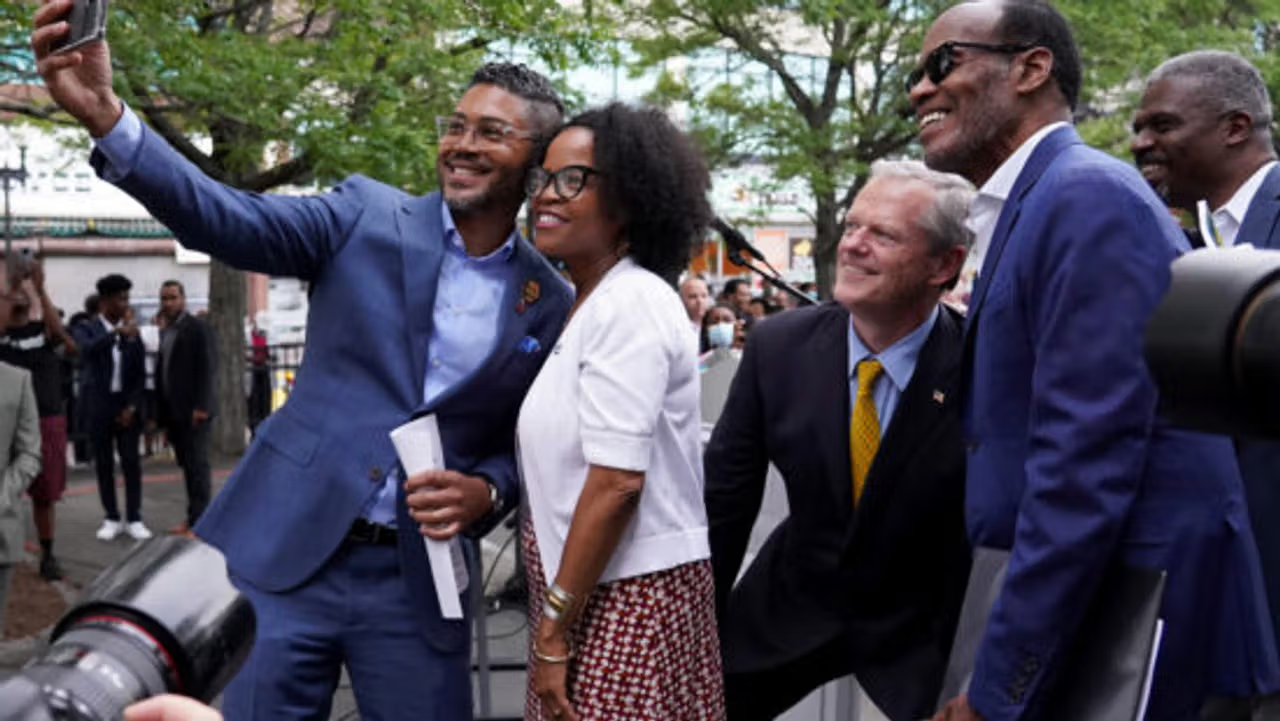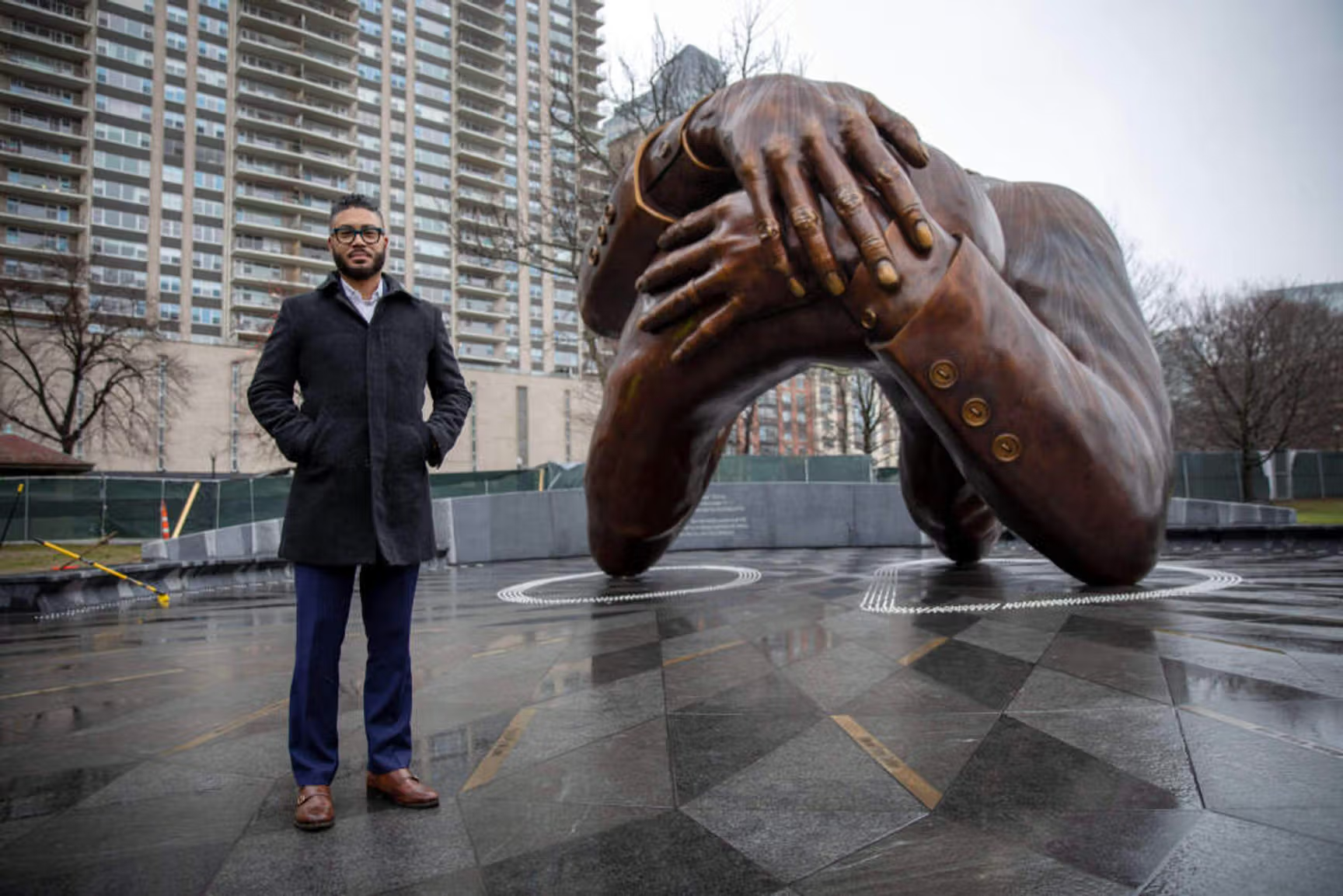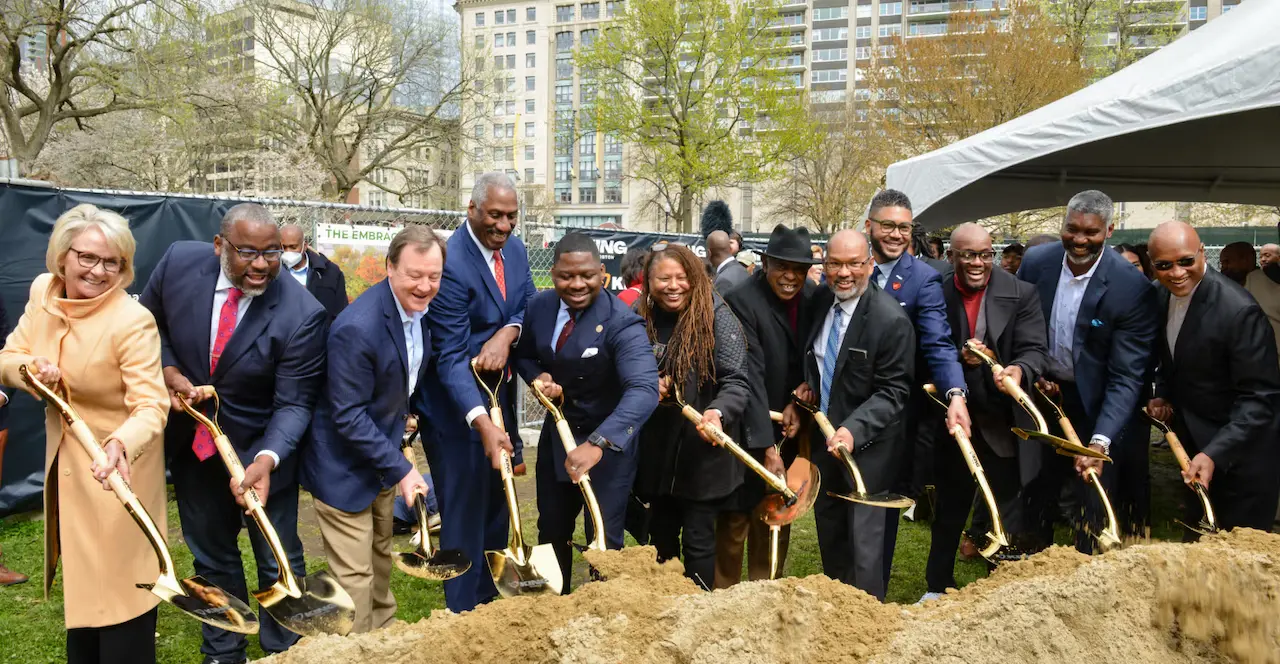PUBLIC ART & Monuments
We invite you to “stand in the heart of their hug,” – Hank Willis Thomas
THE EMBRACE & THE 1965 FREEDOM PLAZA
We unveiled The Embrace and the 1965 Freedom Plaza in January 2023 on the Boston Common, the first public park in our nation. The Embrace Memorial is an important cultural symbol of equity and justice for Boston residents and all those who visit the city.
The artwork is a permanent monument representing the Rev. Dr. Martin Luther King Jr. and Coretta Scott King’s love and powerful presence in Boston, a time that helped shape their approach to an equitable society.
LOVE. EQUITY. JUSTICE.
Five years in the making, The Embrace is a reflection of Boston’s diversity – standing bold and beautiful as a symbol of Boston’s rich history and expansive cultural community.
The Rev. Dr. Martin Luther King Jr. and Coretta Scott King met in Boston in 1952. The Embrace is a memorial to their love and leadership. Inspired by a photograph of the Kings embracing, it reflects the power of collective action, the role of women in the freedom movement, and the forging of solidarity out of mutual empathy and vulnerability.
At the invitation of MASS Design Group, artist Hank Willis Thomas brought his distinct point of view to the national design competition held by Embrace Boston. Their collaborative concept seemed like a longshot—would anybody want a memorial to the Kings that didn’t include their faces?—but The Embrace resonated deeply. Though abstract, it captured the essence of the Kings as a couple and invited people to “stand in the heart of their hug,” as Thomas put it.
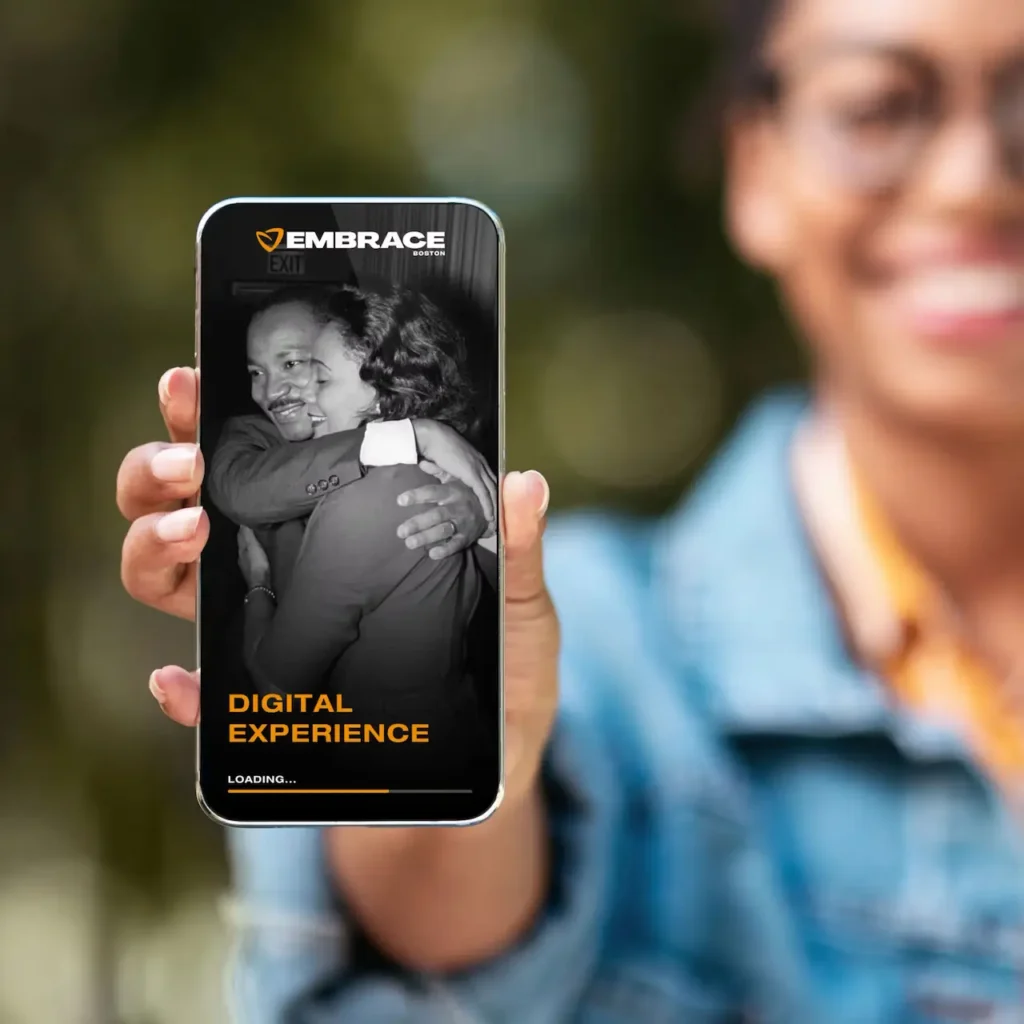
THE STORY BEGAN IN BOSTON
The Embrace Digital Experience is a self-guided app offering storytelling, first-hand accounts, and historical photos and images to visitors.
MEET OUR HEROES
This digital experience allows visitors to explore the monument, and the 1965 Freedom Plaza beneath it at their own pace, while learning more about Boston’s civil rights legacy and the incredible contribution of the Kings. The Embrace and the 1965 Freedom Plaza are reminders of the Kings’ high ideals born from struggle—to foster a “beloved community.”
FEEL THE HISTORY & IMAGINE THE FUTURE
We welcome you to hear stories of local civil rights struggles while the Kings made Boston their home; be introduced to civil rights and social justice leaders active in Greater Boston from 1950 –1975; listen to reflections from the artist, Hank Willis Thomas; as well as behind-the-scenes insights on how The Embrace monument was created.
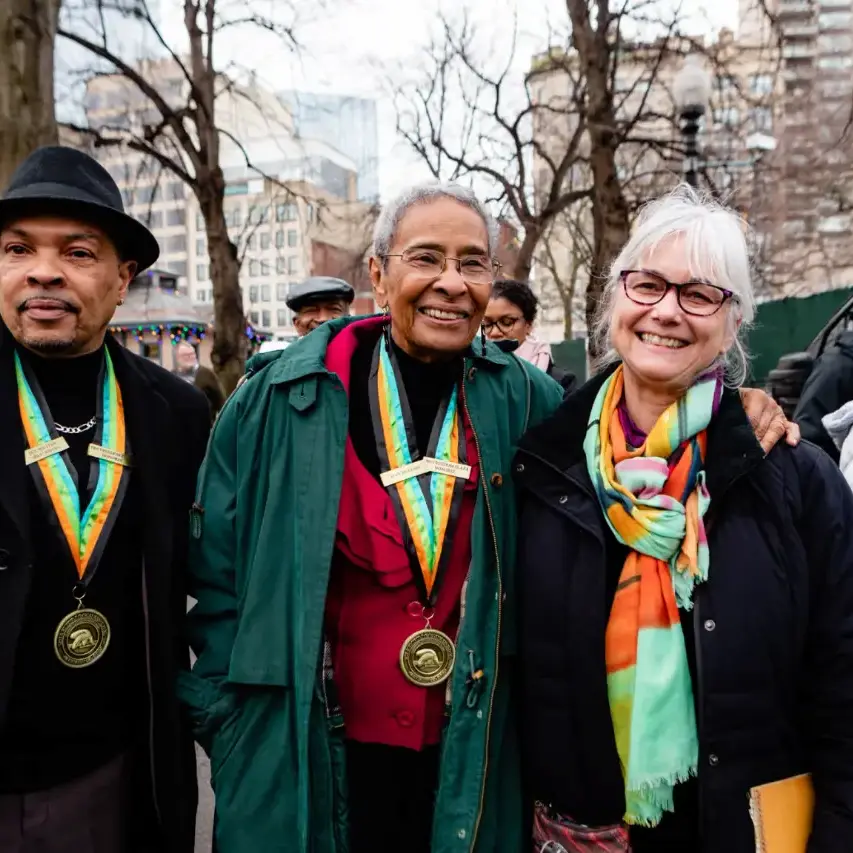
OUR HEROES: THE 1965 FREEDOM PLAZA
On the ground surrounding The Embrace, the 1965 Freedom Plaza honors 69 civil rights and social justice leaders active in Greater Boston from 1950 –1975. They marched. They spoke out. They fought. They resisted. They led and still remain advocates and agitators whose tireless work was fueled by collective action and love.
Engagement
Narrative
Spatial Justice
Policy
MONUMENT MARKERS Program
As Boston approaches the 250th anniversary of American independence in 2026, Everyone250 is reimagining commemoration through the lenses of equity, truth, and civic engagement. This milestone offers a powerful opportunity to deepen public understanding, uplift overlooked narratives, and honor the full diversity of the communities that have shaped both Boston and the nation.
Boston’s legacy lives not only in its iconic landmarks but also in the neighborhoods, gathering places, and everyday spaces where resistance, creativity, and community flourished. Too many of these vital locations, especially those tied to BIPOC and historically minoritized communities, remain unrecognized in the city’s commemorative landscape. Everyone250 seeks to change that by creating a new narrative framework, one that reflects the depth and diversity of the city’s history.
The Monument Markers Program will commemorate sites across Boston and beyond through a collaborative, community-driven process. In partnership with local historians, grassroots organizations, Embrace Boston, the City of Boston, the Landmarks Commission, and MA250, this initiative is establishing permanent public markers that honor the spaces where cultural memory and collective resilience live.
The process begins with community-led discovery and an open site nomination process that invites residents to share stories and recommend locations of personal and historical importance. Working closely with historical institutions and advisory groups, Everyone250 will then review and contextualize selected sites, so that each marker is grounded in community insight.
Once selected, each site will be commemorated with a physical plaque designed to highlight its cultural and historical significance. The installation of the plaque will be accompanied by an unveiling event that may be an already scheduled gathering requested by the location. At the same time, a digital platform and interactive map will be launched as part of Everyone250’s experiential website. This resource will provide broader access to these stories through layered multimedia elements, including images, archival documents, and multilingual storytelling.
To celebrate the installations and engage the public, Everyone250 will organize a series of unveiling events, walking tours, and educational experiences. These programs will not only elevate the significance of the sites themselves but also foster intergenerational dialogue and reflection throughout the city.
Importantly, the initiative is designed with long-term accessibility and civic engagement in mind. The plaques and the digital platform together will serve as enduring tools for education, cultural exploration, and public memory. They will contribute to a new landscape of public history—one that honors the depth and complexity of Boston’s past, while inspiring its future.
These markers are not simply commemorative objects. They are acts of recognition. They are invitations to learn and reflect. And they are foundational pieces of a broader vision to build a more inclusive and truthful understanding of who Boston is, and who it can be.
Some sites in the Monument Marker Program may not be as old as Massachusetts’ more traditional landmarks. This is because many communities, particularly BIPOC, immigrant, and other historically marginalized groups, did not have the same opportunities or resources to preserve their spaces through formal recognition in earlier eras. Their histories were often overlooked, undocumented, or excluded from public commemoration.
By highlighting these sites today, the program seeks to broaden what counts as historically significant, recognizing that community memory, resilience, and cultural contribution are just as vital as age in shaping Boston’s story.
Add subtitle text (heading 3)
Lorem ipsum dolor sit amet, consectetur adipiscing elit. Ut elit tellus, luctus nec ullamcorper mattis, pulvinar dapibus leo.
LEARN MORE BELOW
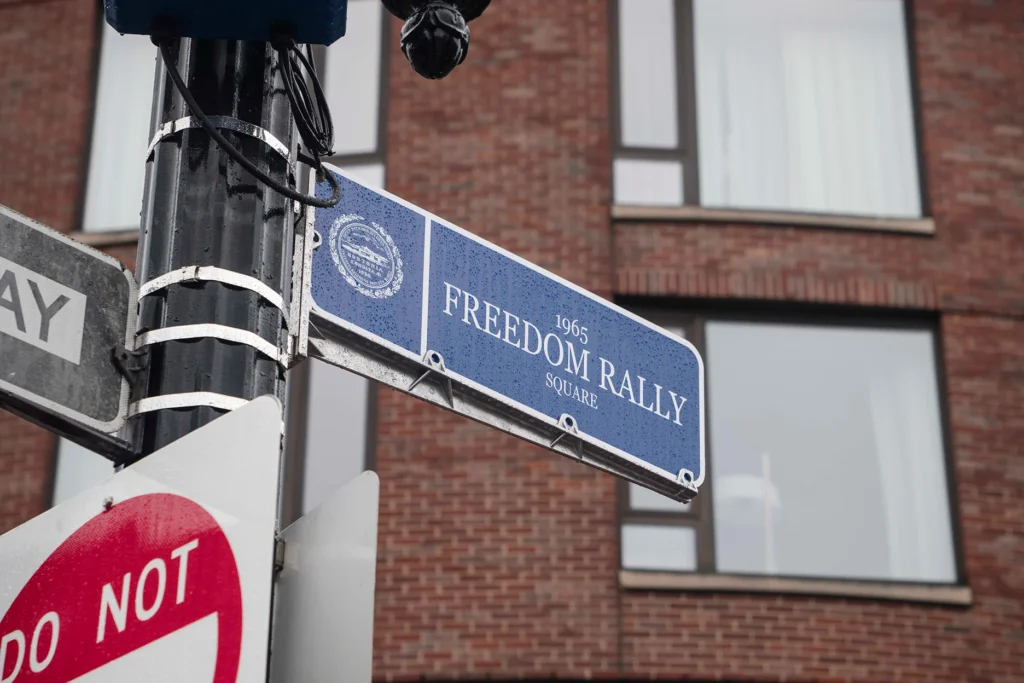

1965 freedom rally square
Beacon Hill, Boston, MA
Monument Markers Program
In April 2025, Embrace Boston and Everyone250 joined city leaders, community members, and civil rights veterans to dedicate Freedom Rally Square on Boston Common at Beacon and Charles Streets, the historic site where Dr. Martin Luther King Jr. and Coretta Scott King led more than 20,000 people in the 1965 Freedom Rally. The naming honors that transformative moment in Boston’s history and the generations of activists who carried its spirit forward. Freedom Rally Square stands as a living monument, a place to gather, reflect, and recommit to building a city rooted in justice, belonging, and collective courage.
LEARN MORE
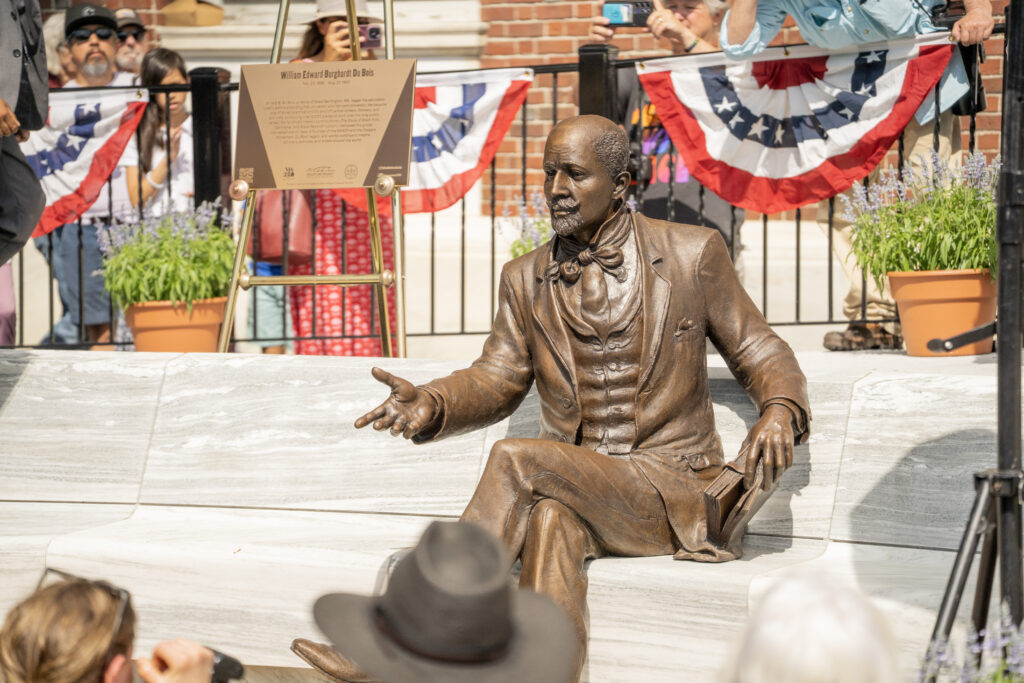
W.E.B. Dubois Monument
Great Barrington, MA
Monument Markers Program
Dr. W.E.B. Du Bois, a native of Great Barrington, MA, began his education locally before attending Fisk University and Harvard University. He became one of America’s most prolific and influential writers, thinkers, and activists, producing over 4,000 pieces of work over his long public career. His landmark literary contributions—The Souls of Black Folk, Darkwater, and Black Reconstruction— reshaped the global conversations on race. A founder of the NAACP and the Niagara Movement, Du Bois’ legacy and works continue to inspire scholars, activists, and artists around the world.
LEARN MORE BELOW


UNBOUND at KING's CHAPEL
Boston, MA
Monument Markers Program
Unbound at King’s Chapel invites visitors to confront Boston’s layered history of freedom and faith. Created by artist Harmonia Roseles in collaboration with MASS Design Group, the sculpture examines the church’s ties to slavery and the people—both enslaved and free—whose stories have long been buried within its walls. Through guided interpretation, reflection, and public dialogue, Unbound transforms one of Boston’s oldest institutions into a space for reckoning and repair, expanding the narrative of liberty to include those who were once excluded from it.
LEARN MORE BELOW
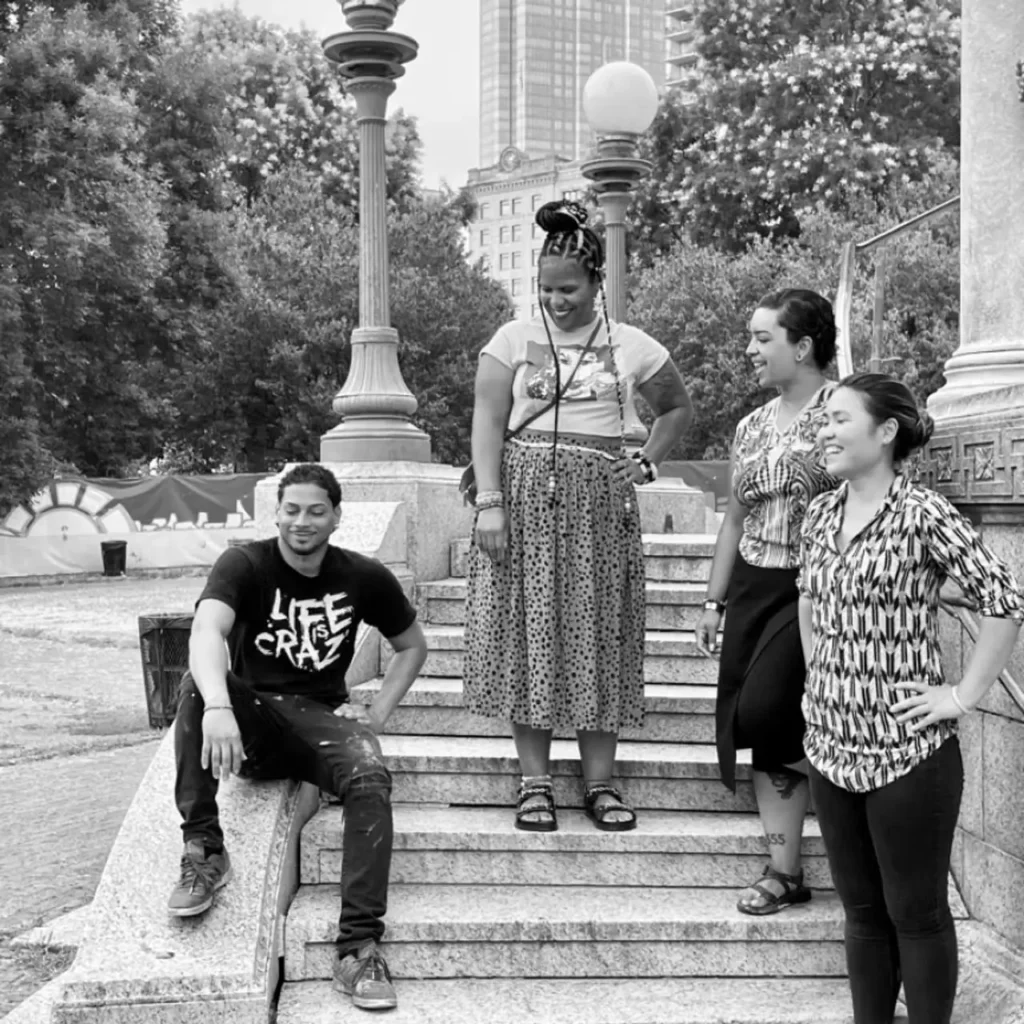
The Wrap
The Embrace Memorial Fence Wrap Art Commission was envisioned as an opportunity to endorse and uplift Boston-based BIPOC digital artists and photographers to share their voice – through their art – along the fence while The Embrace memorial was under construction.
Embrace Boston believes that activating arts and culture is essential to reimagining and recasting cultural representations and practices grounded in equity, joy, and wellbeing.
As a part of an ecosystem committed to change, Embrace Boston engages arts, culture, research, and policy to dramatically transform Boston into a city that centers racial equity and justice.
Meet the artists that were commissioned as a part of this historic moment. The Wrap was meant to spark dialogue, engage and inspire through the creative spirit from across the city. This exhibit is the work of each artist responding to the prompt:
Embracing Boston’s 20+ Neighborhoods
LAND ACKNOWLEDGEMENT
We acknowledge that Boston is situated on the traditional homelands of the Massachusett People. We also acknowledge their relatives and neighbors, the Nipmuc and Wampanoag Peoples.
We recognize the historical legacy of colonialism and racism by honoring and paying respect to the land. We do it to raise greater public consciousness of First Nation sovereignty and cultural rights as a small step toward equitable relationships and reconciliation.
It also raises questions of what it means to live in a new Boston. What did it take for us to get here? And how can we be accountable to our part in history?
